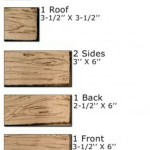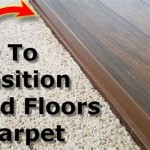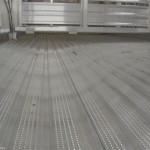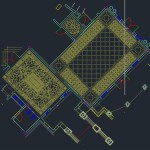Rubber Flooring That Looks Like Wood Planks: A Comprehensive Guide
The demand for aesthetically pleasing and functionally robust flooring options has led to the rise of rubber flooring that mimics the appearance of wood planks. This innovative solution offers a compelling alternative to traditional hardwood, combining the visual appeal of wood with the practical benefits of rubber. This article provides a detailed exploration of rubber flooring that emulates wood planks, covering its advantages, applications, installation considerations, and maintenance requirements.
Key Advantages of Rubber Flooring Mimicking Wood
Rubber flooring that resembles wood planks presents several advantages over traditional wood flooring and other common flooring materials. These advantages range from enhanced durability and comfort to improved safety and ease of maintenance.
One significant advantage is its superior durability. Rubber is naturally resilient and can withstand heavy foot traffic, making it ideal for high-traffic areas such as commercial spaces, gyms, and playrooms. Unlike wood, rubber is resistant to scratches, dents, and gouges, ensuring a longer lifespan and reduced need for frequent replacements or repairs. This inherent durability translates into long-term cost savings for property owners.
Comfort is another key benefit. Rubber flooring provides a cushioned surface that is more comfortable to walk and stand on compared to hard surfaces like wood, tile, or concrete. This cushioning effect reduces strain on joints and muscles, making it a preferred choice for spaces where people spend extended periods standing, such as retail stores, healthcare facilities, and home gyms. The inherent elasticity of rubber also contributes to noise reduction, absorbing impact sound and minimizing echoes, which is particularly beneficial in multi-story buildings or noisy environments.
Safety is a paramount concern in any flooring choice. Rubber flooring offers enhanced slip resistance, even when wet, making it a safer option compared to wood or tile, which can become slippery when damp. This slip resistance reduces the risk of accidents and injuries, making it suitable for areas where safety is a priority, such as schools, hospitals, and senior living facilities. Additionally, rubber flooring is often available with antimicrobial properties, inhibiting the growth of bacteria and mold, contributing to a healthier indoor environment.
Maintenance is significantly easier with rubber flooring compared to wood. Rubber is non-porous, making it resistant to stains and spills. Routine cleaning typically involves sweeping or vacuuming to remove loose debris, followed by mopping with a mild detergent. Unlike wood, rubber does not require waxing, polishing, or refinishing, further reducing maintenance costs and effort. The ease of maintenance makes it a practical choice for busy households and commercial establishments.
Applications of Wood-Look Rubber Flooring
The versatility of rubber flooring that simulates wood planks makes it suitable for a wide range of applications, spanning residential, commercial, and industrial settings. Its ability to combine aesthetics with functionality has made it a popular choice for various spaces.
In residential settings, wood-look rubber flooring is ideal for areas such as kitchens, bathrooms, basements, and playrooms. Its water resistance makes it well-suited for moisture-prone areas like kitchens and bathrooms, where spills and leaks are common. The cushioning effect makes it comfortable for playrooms and basements, providing a safe and comfortable surface for children and families. The aesthetic appeal of wood-look rubber flooring allows homeowners to create a warm and inviting atmosphere without the maintenance concerns associated with traditional hardwood.
Commercial applications are equally diverse. Retail stores benefit from the durability and comfort of rubber flooring, providing a resilient surface that can withstand heavy foot traffic and reduce employee fatigue. Healthcare facilities appreciate the antimicrobial properties and slip resistance of rubber flooring, contributing to a safer and healthier environment for patients and staff. Gyms and fitness centers utilize rubber flooring for its impact absorption and durability, protecting floors from damage caused by heavy equipment and providing a comfortable surface for workouts. Office spaces are increasingly adopting rubber flooring for its noise reduction and aesthetic appeal, creating a more comfortable and productive work environment.
Industrial settings also find value in wood-look rubber flooring, particularly in areas where safety and durability are paramount. Warehouses and manufacturing facilities can utilize rubber flooring to provide a slip-resistant and impact-resistant surface for workers and equipment. Laboratories and cleanrooms benefit from the antimicrobial properties and ease of cleaning of rubber flooring, maintaining a sterile and safe environment. Garages and workshops appreciate the resistance of rubber flooring to oil, chemicals, and other common spills, protecting the underlying floor and providing a safer work surface.
Specific examples include the use of wood-look rubber flooring in dance studios to provide a cushioned and slip-resistant surface for dancers, in schools to create a safe and comfortable environment for students, and in restaurants to reduce noise levels and provide a durable and easy-to-clean flooring solution.
Installation and Maintenance Considerations
Proper installation and maintenance are crucial for maximizing the lifespan and performance of rubber flooring that mimics wood planks. Careful attention to these aspects ensures that the flooring retains its aesthetic appeal and functional benefits over time.
Installation typically involves preparing the subfloor by ensuring it is clean, level, and dry. Any imperfections or irregularities in the subfloor can affect the appearance and performance of the rubber flooring. Depending on the type of rubber flooring, installation methods may include gluing down the planks with a suitable adhesive, interlocking the planks together using a tongue-and-groove system, or using loose-lay planks that rely on friction to stay in place. Professional installation is often recommended, especially for larger areas, to ensure proper alignment and adhesion.
Acclimation is an important step before installation. Allowing the rubber flooring to acclimate to the room's temperature and humidity for a period of time, typically 24 to 48 hours, helps to prevent expansion or contraction after installation. This ensures a more stable and long-lasting flooring surface.
Maintenance is relatively straightforward. Regular sweeping or vacuuming removes loose dirt and debris. For routine cleaning, mopping with a mild detergent and water is usually sufficient. Harsh chemicals and abrasive cleaners should be avoided, as they can damage the surface of the rubber flooring. For stubborn stains, a specialized rubber floor cleaner may be necessary.
Preventative measures can also help prolong the lifespan of rubber flooring. Using mats or rugs in high-traffic areas can help protect the flooring from scratches and wear. Avoiding dragging heavy objects across the floor can prevent dents and gouges. Promptly cleaning up spills can prevent staining and damage. Regular inspection of the flooring can help identify and address any issues early on, preventing them from escalating into more significant problems.
Addressing specific concerns, such as fading from sunlight exposure, can be mitigated by using window coverings or UV-resistant coatings. Scratches, while less common than with wood flooring, can be minimized with protective pads on furniture legs and by avoiding the use of sharp objects on the floor. Overall, a proactive approach to maintenance ensures that the rubber flooring retains its appearance and performance for many years.
In conclusion, rubber flooring that resembles wood planks offers a compelling combination of aesthetic appeal and functional benefits, making it a versatile and practical choice for a wide range of applications. Its durability, comfort, safety, and ease of maintenance make it a superior alternative to traditional wood flooring and other common flooring materials. Proper installation and maintenance are essential for maximizing its lifespan and performance. As technology advances, the realism and variety of wood-look rubber flooring options continue to expand, further solidifying its position as a leading flooring solution.

Impact Rolls Wood Series Shock Absorbent Court Flooring

Rubber Tiles Floor Planks Wood Flooring

Impact Rolls Wood Series Shock Absorbent Court Flooring

Buy China Whole Luxury Vinyl Plank Spc Wood Look Rubber Flooring 5 Globalsources Com

Athletic Vinyl Padded Roll Court Flooring 7 Mm X 6x30 Ft

Wood Look Marley Rolls Backed By Rubber Underlayment

Benefits Of Reversible Foam Woodgrain Tiles

Can You Put Laminate Or Vinyl Plank Flooring Over Tile

The Best Fake Wood Flooring 4 Faux Floor Ideas Inc

Faux Hardwood Floor Interlocking Foam Tiles 25 Pack Fake Wood Flooring Gym Room At Home
Related Posts








